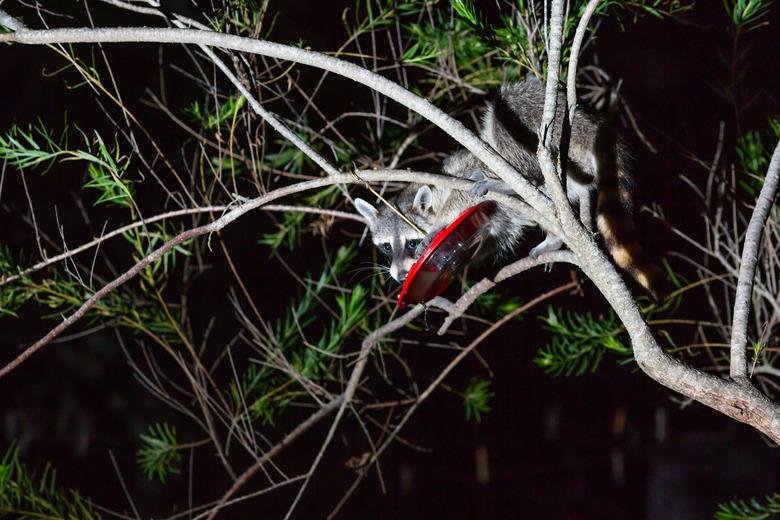How To Keep Raccoons Out Of Hummingbird Feeders
Hummingbirds are beautiful and fun to watch as they feed in your garden. However, neighborhood raccoons may decide that your hummingbird feeder is also a raccoon feeder. Fortunately, there are several ways to deter raccoons from your hummingbird feeder so that the intended species is the only one that uses it.
Use a Pole Baffle
If you are having hummingbird feeder problems, there are several different types of raccoon and squirrel baffles that can be installed on the pole to make it more difficult for these critters to climb, jump, and reach the feeder. The baffles serve as an obstacle for the animals to keep them away. You can either purchase a baffle or make one.
Torpedo baffles are effective at keeping both raccoons and squirrels away from bird feeders hung on poles. They are cylindrical in shape, and the top is closed. The shape and metal material create a slippery barrier for these animals, preventing them from getting a good grip. They will slide off the pole and give up on climbing it after a few failed attempts. The baffle stays in place with a clamp that is adjustable to the height that best suits your bird feeder. Place the baffle on the pole and slide it down to rest on the clamp.
A wrap-around baffle, also referred to as a cone-shaped baffle, can be used if you cannot slide a torpedo baffle over the pole. This type of baffle, which is usually made of powder-coated metal, also works well with a shepherd's hook. The cone shape creates an obstacle that the raccoons cannot figure out.
Use a Hanging Baffle
If you are hanging the bird feeder from a tree or near a tree or fence, you can use a cone-shaped hanging baffle. This keeps animals from jumping onto the feeder and stealing food. If an animal is able to jump onto it, it rotates or rocks back and forth, causing the animal to lose its balance and slip off. It is a specific type of baffle that goes directly over the top of the bird feeder and acts as a protective shield if animals try to jump onto the feeder from above.
A dome-shaped hanging baffle also shelters the bird feeder from inclement weather and looks similar to a small umbrella over the feeder. You can get red baffles for hummingbird feeders, which serve two purposes: Hummingbirds are attracted to the color red, and these baffles will keep their food fresher for longer by providing shade from the sun.
Hang the Feeder Between Trees
You can hang a bird feeder on twine or cable between two trees if there is enough distance between the two. Tie the twine on a branch of two trees. Hang the bird feeder on the twine in the center so that it is equidistant between the trees. The twine will not be able to support the raccoon's weight and will prevent it from reaching the feeder.
Remove the Feeder at Night
If raccoons are your only visitors, take the bird feeder inside when the sun goes down. Raccoons are nocturnal and usually do their food scavenging in the evenings and overnight. You can also remove the feeder altogether for a brief period of time. Once the raccoons realize that it is gone, they will move on and leave your yard alone.
Avoid Using Oil and Grease
Do not apply oils, grease, shortening, or petroleum jelly to the pole or shepherd's hook on which the bird feeder is hanging. While this is effective in making the pole very slippery for both raccoons and squirrels and prevents them from climbing and getting a proper grip, it is not advised. The grease and oil can coat the animals' fur, which can cause health problems for them or make them more vulnerable to predators.
The use of oil or petroleum jelly can also harm the hummingbirds, as it may get on their feathers if they come in contact with the pole. Ornithologists caution that if a hummingbird's tiny, delicate wings and body are coated with oil, grease, or petroleum jelly, it can be extremely harmful and can negatively affect the bird's flying ability and overall health and safety.
